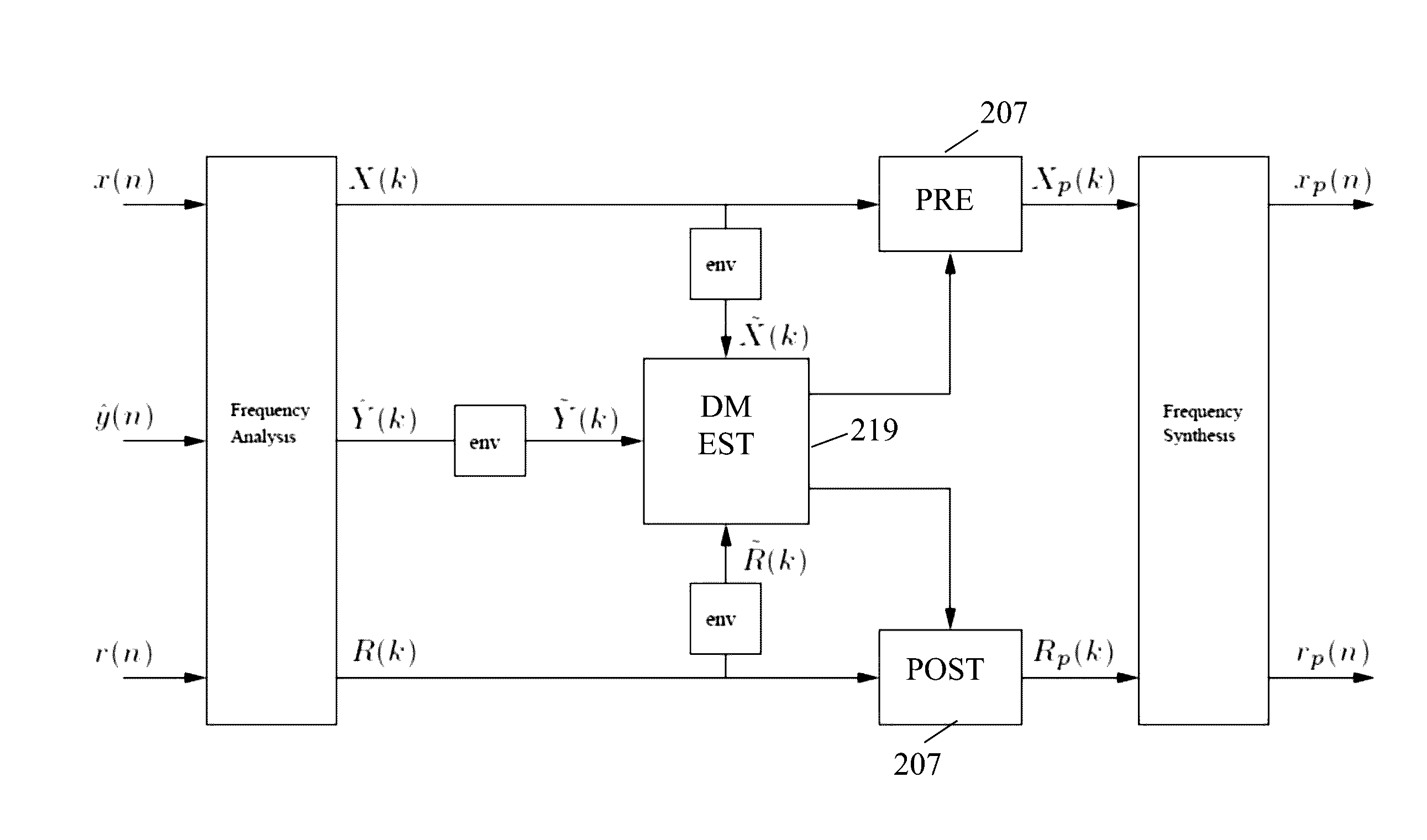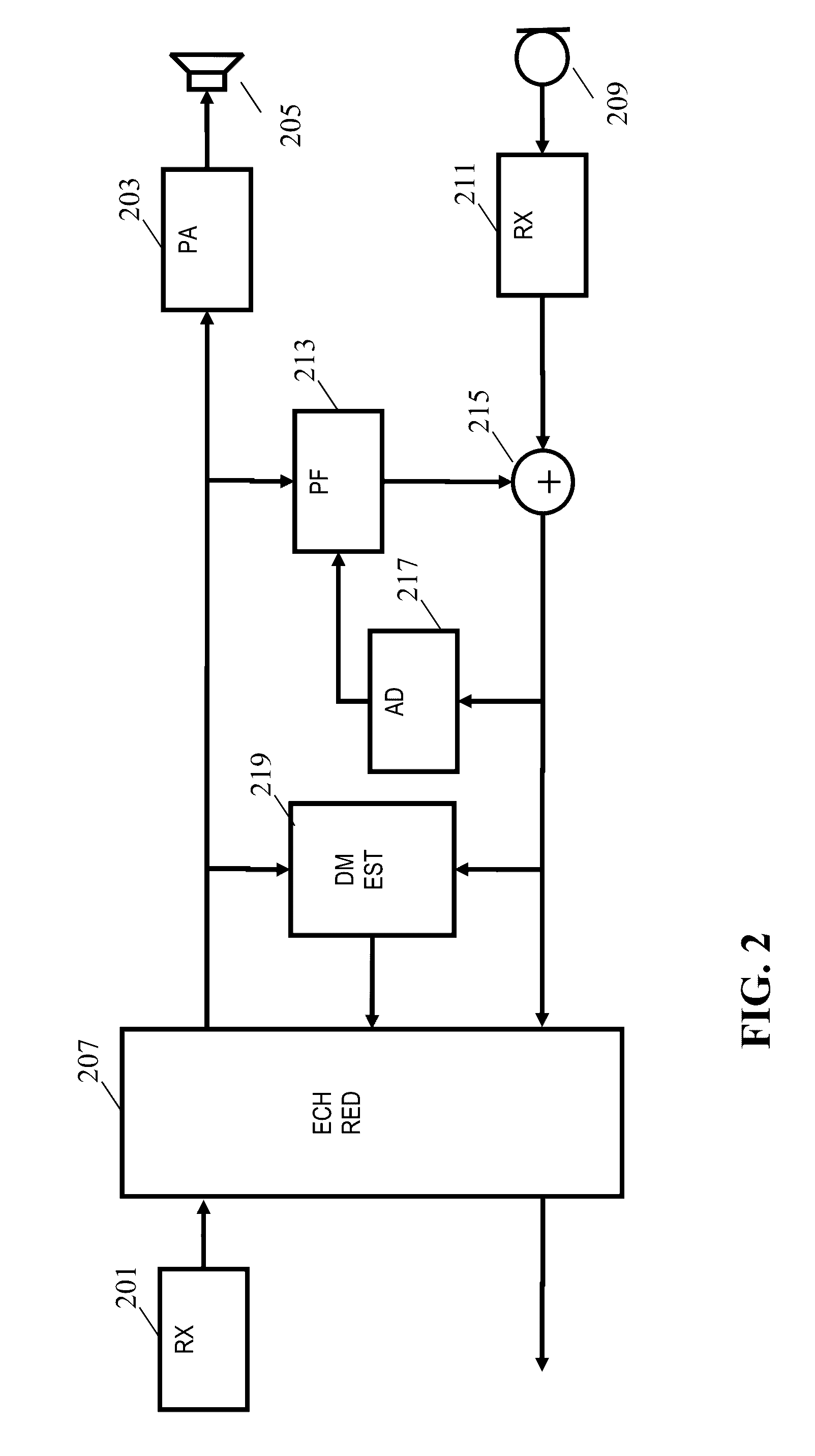Echo cancellation
a cancellation and noise technology, applied in the field of noise cancellation, can solve the problems of not being able to completely remove the acoustic echo, the loudspeaker exhibits significant non-linear distortion during operation, and the disturbance known as an acoustic echo, etc., to optimize the quality trade-offs, optimize operation and performance, and highly efficient echo suppression
- Summary
- Abstract
- Description
- Claims
- Application Information
AI Technical Summary
Benefits of technology
Problems solved by technology
Method used
Image
Examples
Embodiment Construction
[0097]FIG. 1 illustrates the principle of a conventional linear echo canThe echo cancelling system may specifically be used in a communication system and is intended to cancel the echo perceived by a far end resulting from the audio signal from the far end being partially returned together with the audio from the near end.
[0098]The echo canceller receives an input signal x(n) which is fed to a loudspeaker 101 and rendered therefrom. The input signal x(n) is received from the far end and may for example contain speech or other audio sources.
[0099]A microphone 103 generates a microphone signal by capturing audio in the environment. The audio comprises e.g. a local speaker or other audio sources. In addition, due to the acoustic coupling / path between the loudspeaker 101 and the microphone 103, the microphone signal comprises part of the audio rendered from the loudspeaker 101, represented by e(n). If the captured signal is returned to the far end without further processing, the transm...
PUM
 Login to View More
Login to View More Abstract
Description
Claims
Application Information
 Login to View More
Login to View More - R&D
- Intellectual Property
- Life Sciences
- Materials
- Tech Scout
- Unparalleled Data Quality
- Higher Quality Content
- 60% Fewer Hallucinations
Browse by: Latest US Patents, China's latest patents, Technical Efficacy Thesaurus, Application Domain, Technology Topic, Popular Technical Reports.
© 2025 PatSnap. All rights reserved.Legal|Privacy policy|Modern Slavery Act Transparency Statement|Sitemap|About US| Contact US: help@patsnap.com



